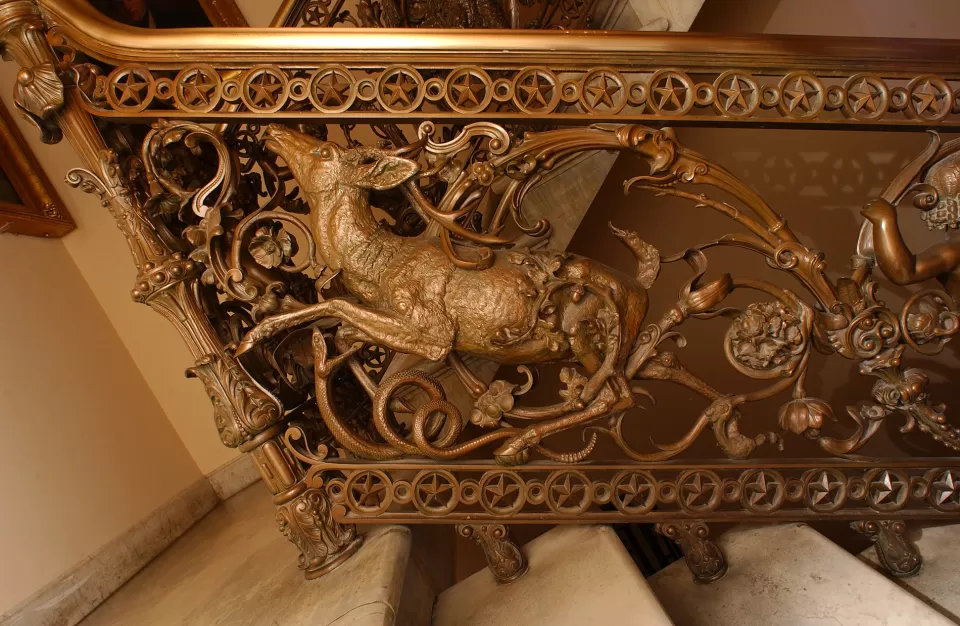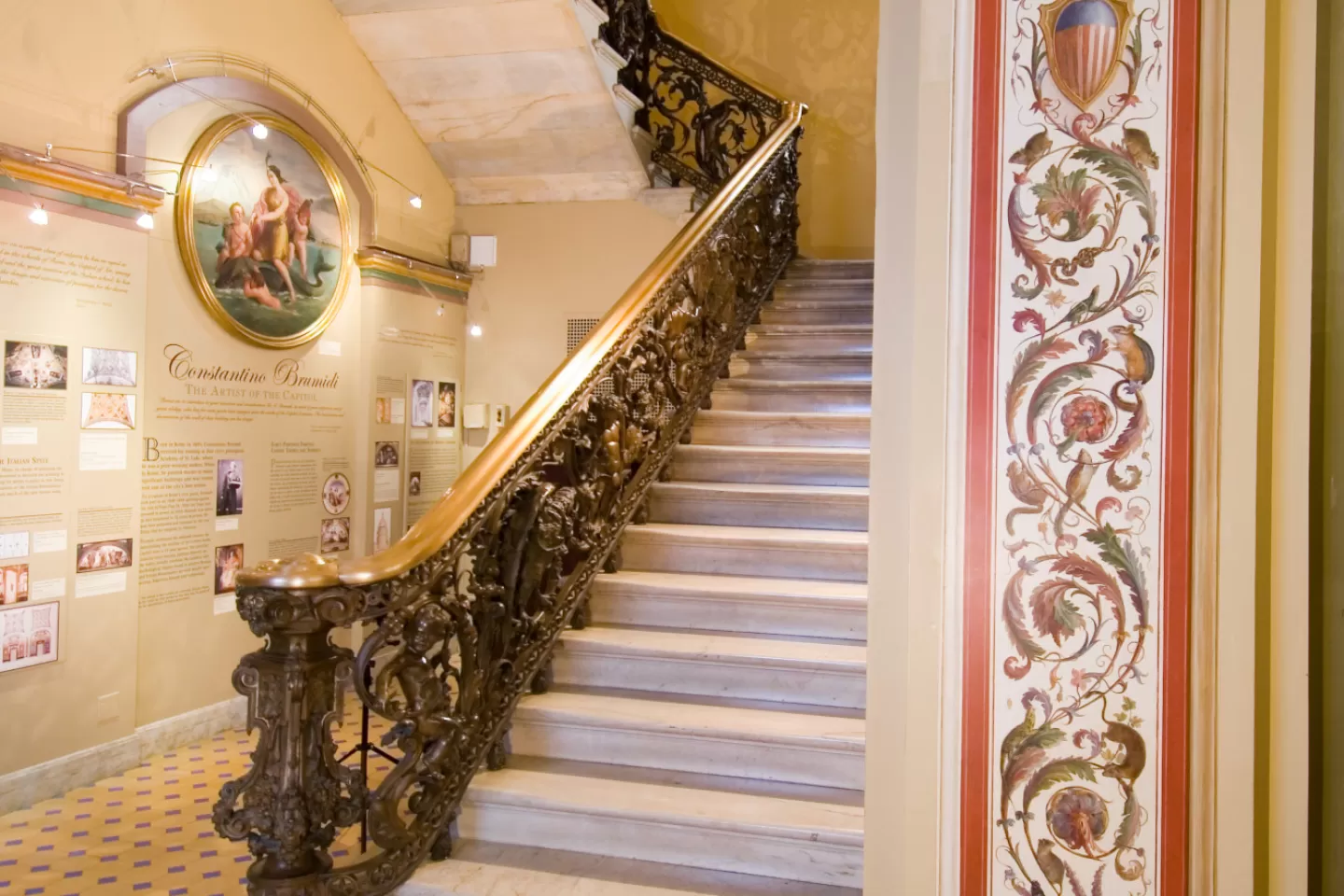During the mid-19th-century expansion of the U.S. Capitol, which added the House and Senate extensions, four private staircases were installed to allow representatives and senators to move quickly between their second-floor chambers and the building's first floor. Two are located near the House chamber, and two are near the Senate chamber; each is fitted with a magnificent cast bronze railing. The railings seem alive with whirling vines and gracefully curling leaves with grapes and pineapples. Interspersed among the leaves in full round are classical putti, American eagles, birds with their nests, and running stags.
The supervising engineer of the extension project, Captain Montgomery C. Meigs, took great interest in the decoration of the wings, and in March 1857 he turned to supervising artist Constantino Brumidi for a preliminary design for the railings of these stairs. Brumidi, who had emigrated from Italy five years earlier, was familiar with European ornamental bronze work. The sketch that he created for Meigs, which is preserved in the Office of the Architect of the Capitol, shows the intricate details that were later sculpted. It also shows a newel post formed of a female figure (i.e., a caryatid) representing Aurora holding a candelabrum, but this figure did not become part of the final design.

To cast these complicated designs, Meigs turned to the highly regarded Philadelphia firm of Archer, Warner, Miskey & Co., known principally for their lamps, chandeliers, and gas fittings and for their artistic efforts. On July 24, 1857, Meigs sent the firm Brumidi's sketch with the following instructions:
. . . there are two of each pattern, one of each kind turning to the right and the other to the left. The work is so arranged as to use the same patterns repeated throughout . . . . Be good enough to send me a more complete estimate for the construction and setting up the railings in Antique Bronze.
The success of the commission was in large measure a credit to the skilled modeler working for the company, Edmond Baudin. Philadelphia in the 1850s was regarded as the center of bronze manufacturing in the United States, second only to Paris world-wide. Archer, Warner, and Miskey paid high salaries to get the best designers. Baudin, who was trained in bronze work in his native France, understood the artistic nature of the Capitol project and the feeling that Brumidi and Meigs were trying to convey. Because he was encouraged by the company to strive for accuracy in his depiction of natural forms, he brought into his studio live deer, eagles, pigeons, snakes, and children to serve as models.

His efforts were so successful that a writer for The New York Times reported:
I have just seen the moulds, and the models, and some of the completed portions of a magnificent bronze balustrading designed for one of the grand stairways of the new Capitol Building at Washington, which is not merely a wonderful piece of work in itself, but is, altogether, more elaborately elegant than any thing of the kind which is to be seen in Europe. This balustrading, which is cast, not in basso relievo, but in full relief of arabesques and figures, is about three feet in height, and is to be carried to the length of 160 feet up the noble flight of steps leading from the new Hall of the Representatives to the corridor of Committee Rooms. The designs, furnish [sic] by BRUMIDI, of Washington, are singularly bold and graceful . . . and they consequently comprise almost all those curvilinear forms and intricate traceries which lay the heaviest tax upon the skill of the draughtsman and the founder.
On November 9, 1857, Archer and Co. brought a panel of the railing to Washington for Meigs's approval. Meigs noted, "It is a most beautiful work. The figures are well, quite well enough for decoration, and the scroll work is the finest I have ever seen. Such a railing certainly is not to be found this side of Rome, if there." The first railing for the House staircase was delivered in late 1858. On March 17, 1859, the firm (now reorganized as Warner, Miskey, and Merrill) reported that they had one flight finished and would like to deliver it before beginning another, because they had room to assemble only one railing at a time in their workshop.
On November 1, 1859, Captain Meigs was transferred to construct fortifications at the Tortugas in the Gulf of Mexico and at Key West, Florida; he was replaced by Captain William B. Franklin. Four days after taking charge, Franklin wrote to Warner, Miskey, and Merrill informing them that he wanted the last rail installed in one month. The final railing was installed in the Senate extension on November 21, 1859.
Over the years, the railings became blackened by grime and darkened by coatings, some areas were corroding, and the fine modeling of the figures had been obscured. In 1987–1989 the railings were cleaned and conserved under a contract with the Architect of the Capitol. Fortunately, the original "Antique Bronze" patina was found intact. After the cleaning was completed, the railings were coated with a special protective lacquer to help preserve their restored 19th-century splendor. A detailed survey of the railings was completed in 2005.
